Racism

A favorite movie of mine growing up was the 1999 cartoon Our Friend, Martin. It combines two of the subjects I love most: time travel and Martin Luther King Jr. The main character, Miles, a Black sixth grader, visits the childhood home of King and ends up traveling back in time to meet King at various stages of his life. Miles, who was largely unaware of King before time traveling, eventually learns that King was assassinated. In order to prevent this, Miles convinces his new friend Martin to come to the future with him. And while that decision spares King’s life, the movie makes it clear that Miles saving his friend’s life would prevent the racial equality we now enjoy in the U.S.
In the modern U.S., are we really enjoying a post-King racial equality?
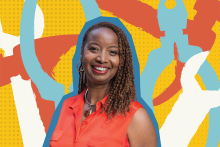
Brenda Salter McNeil is an ordained minister in the Evangelical Covenant Church, associate professor of reconciliation studies at Seattle Pacific University, and the author of multiple books on the topic of racial reconciliation. McNeil is acutely aware of critical attitudes toward racial reconciliation and is seeking to emphasize the importance of reparations and intersectionality in her new book, Empowered to Repair. I sat down with McNeil to talk about reconciliation, Obama, and Black support for former president Donald J. Trump.
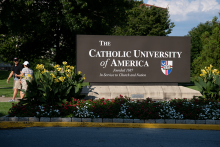
Rachel Carbonneau didn’t show up to Catholic University of America in late January planning to talk about abortion. The doula and public health advocate was visiting a class for aspiring nurses, doctors, and other public health professionals to talk about social determinants of health — the ways that economics, community structure, bias, and institutions affect health outcomes. The student-led conversation had touched on a wide range of topics from the opioid crisis, to the fact that Black birthing people in New York are five times more likely than their white counterparts to die in childbirth, to the impact of COVID-19 on placental health.

I was in high school, visiting my grandparents’ church in Peru, Ind., and the theme for the Sunday school class was “money.” The teacher was quick to bring up a verse that has always sounded like it would be a better fit in Benjamin Franklin’s Poor Richard’s Almanack than the Bible. “The love of money is the root of all evil,” the teacher said, summarizing and abbreviating 1 Timothy 6:10. “It’s not that money itself is evil. Objects, in and of themselves, cannot be evil,” he explained. “It’s a matter of the heart.” That logic sat weirdly with me and so I raised my hand to respond. “Don’t we believe that idols are objects and that they are evil? Also, doesn’t the Bible teach us to resist temptation? So wouldn’t it make sense to resist the temptation of money to avoid all the evil that comes with it?”
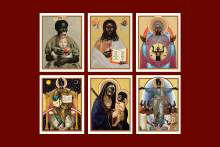
As racist ideas continue to plague U.S. politics, Mark Doox’s Afro-surrealist and satirical graphic novel, The N-Word of God, couldn’t have arrived at a better time.
The book is a visual novel told through depictions of anti-Black images — Black people eating watermelons, Jim Crow caricatures, mammies, and blackface — all stylized in the form of Eastern Christian iconography. This is a style that Doox has termed “Byzantine Dadaism.” Doox’s novel deconstructively takes these caricatures that have historically harmed Black people and reimagines them as symbols of Black resilience and healing, restoring the inherent dignity that belongs to every human being, especially those who have been racialized and subjugated by U.S. anti-Blackness.

In Proverbs 22:6, the author commends parents and educators to “train up a child in the way he should go: and when he is old, he will not depart from it.” Yet thanks to harsh school punishment policies, including suspension for preschoolers, many children are being trained to see their own typical emotional or academic frustrations as cause for strict discipline — or even incarceration.

When I was living on the West Side of Chicago, friends and family would often say that they couldn’t comprehend why I would want to live in such a “dangerous” area. The exchange would usually go something like the following: “I can’t imagine why you’d want to live in Chicago, considering all the gun violence.” “Are you worried about me being shot by the police?” “Well, no. The criminals are the ones who are shooting people.” “The police shoot people too. And there’s a reason the ‘criminals’ are resorting to violence.”
I would then go on to explain the antecedents to Chicago’s gun violence: racial segregation and systemic disinvestment. Beginning in the 1950s and into the ’70s, white Chicagoans fled the South and West Sides because they couldn’t imagine being neighbors with Black people. Because of this, these areas became predominantly Black, and the city has refused to invest resources into these neighborhoods to reverse their poor conditions. The South and West Sides are still suffering from disinvestment today, and this disinvestment is a major contributor to gun violence.

Beyond the Scandal
The Secrets of Hillsong draws on the reporting that exposed misconduct at the Hillsong megachurch. The docuseries goes beyond the headline scandals to explore patterns of abuse engrained in Hillsong’s history and asks what rebuilding looks like in the aftermath of scandal.
Hulu
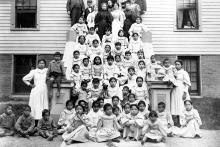
WHEN POPE FRANCIS visited Canada in July 2022, he said he was “deeply sorry” for the abuses inflicted upon peoples from First Nations by more than a century of Catholic-run residential schools. Francis decried the ways “many Christians supported the colonizing mentality of the powers that oppressed the Indigenous peoples,” which resulted in “cultural destruction and forced assimilation.”
To his credit, the pontiff acknowledged that his apology was not “the end of the matter,” and that serious investigation of what was perpetrated and enabled by the church was necessary for the survivors of the schools “to experience healing from the traumas they suffered.”
In the United States, the Seneca Nation is paving a path toward that healing process in their homelands, in particular from harm caused by a Presbyterian-run residential school.
A month after the pope’s apology, Matthew Pagels, then-president of the Seneca Nation — which historically inhabited territory throughout the Finger Lakes and Genesee Valley regions of New York — announced a new initiative to compile and catalog a list of residential school attendees.
To lead the effort, Pagels tapped Sharon Francis, a member of the Wolf Clan of the Seneca Nation and program coordinator at the Seneca Nation crime victims unit. Her passion, she said, is helping her communities heal from personal, intergenerational, and historical traumas.
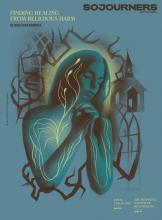
Healing from religious harm: Why compassionate community is part of the journey.
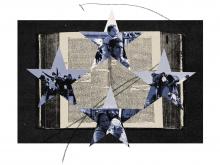
RELIGION PROMOTES WHAT is good in humanity — mercy, wisdom, charity, justice, compassion. These are fundamental to most religious traditions. But religious institutions and movements consist of humans capable of both good and evil, truth and lies, peaceableness and violence. Most Americans have positive feelings about the role religion plays in American life, according to recent surveys. But more than 75 percent are against religious organizations endorsing political candidates or getting involved in partisan politics.
Religious zeal and political power can be an explosive combination — which is why the First Amendment promotes the separation of these powers. Yet the heart and faith of voters impact their choices in the polling booth — and the emotions and imaginations of voters can be swayed by media, social groups, and targeted manipulation to impact an individual’s vote.
One form of manipulation is through conspiracy theories — and conspiracy theories that manipulate religious and social imaginations are particularly potent. They are not new — recall the early U.S. grassroots movements, such as the Anti-Masonic Party and the Know-Nothings, who fought against perceived threats to Protestant Christian values, as well as the John Birch Society’s modern links to the Christian Identity Organization.
As conspiracy theories, disinformation, and populism become more mainstream, one less-understood conspiracy is having an outsized impact on immigration laws: The “great replacement theory” promotes the idea that nonwhite people are brought into the United States and other Western countries to “replace” white voters as part of a godless, liberal political agenda.
The 2017 “Unite the Right” rally in Charlottesville, Virginia, reminded many Americans that the horrors of organized hate were not something in the past. The refrain by white nationalists of “You will not replace us!” recalled virulent antisemitism and anti-immigrant rhetoric of earlier eras. The media repeated the slogan as it tried to make sense of how domestic terrorism, spurred on by online rhetoric regarding the removal of Civil War statues, could have culminated in such social violence and the murder of Heather Heyer by neo-Nazi James Fields Jr. It was a traumatic moment among many in America.
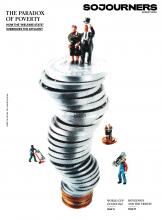
How the “welfare state” is designed to subsidize affluence rather than fight poverty.
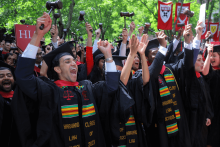
I’m proud to say that I benefitted from affirmative action. These policies, sometimes called “race conscious admission policies,” allow colleges and universities to address unequal access to educational opportunities by taking different aspects of a student’s background, including race, into account among other admission factors. But even with affirmative action in place, in 1994 I joined fewer than 25 other Black men in a freshman class of over 1,000 students at Emory University.
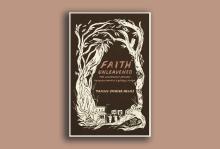
Tamice Spencer-Helms shows how colonialism and white supremacy are embodied in a Jesus made in Christian Europe's image.

MY DAD HAD a very mixed relationship with America. Based in his experience of and feelings concerning white supremacy in America, I was never sure he loved America and knew with certainty that he hesitated to call it “home.” America was never holy ground for him.
On Jan. 6, 2021, while I was watching the Capitol insurrection on TV, he died in his hospice bed. My screen view of the Capitol mob’s recitation of “hang Mike Pence,” in rhythmic incantation to bring forth the blood-boiling hate, was reminiscent of the ritualistic lynching of thousands from 1870 to 1940, particularly and almost exclusively African Americans.
I also had a screen view of my dad. Given the threat posed by COVID-19 exposure upon his chemotherapy-treated and compromised immune system, we were not able to visit him as we would have liked. My sister had installed a camera system to get a visual. I noticed that he was not moving. I earnestly studied his lack of motion and noticed that his mouth was wide open. This was the death posture. I instantly knew he was gone.
Trying to come to grips with the death of my father, while staring with glazed-over eyes at the Capitol riot, I said to myself: “The insurrection took my dad out of here. He had enough of white supremacy in America.” During the chaos of the insurgency, my dad became an ancestor. In the stark reality of his death, I realized he had been in search of holy ground for a long time.

IN 2011, I took a course at my Christian college about the personality type system known as the Enneagram.
The Enneagram is a system built around nine personality types, with each type providing a unique perspective on how we navigate our relationships, emotions, and the world around us. The Enneagram draws on both spirituality and psychology, which distinguishes it from many other personality indicators.
A primary question that emerged for me from that college class: Does the inner work that the Enneagram encourages manifest itself in the outer world through justice work, or is the Enneagram primarily a tool meant to encourage people to focus on individual healing, career, and spirituality?
Throughout history, questions about how and why each human has a unique set of behaviors, motivations, emotions, and cognitions have preoccupied philosophers, psychologists, sociologists, religious thinkers, and Buzzfeed quiz creators alike. Indeed, in the 21st century, “know thyself” is less of a thought-provoking ancient Greek aphorism and more of a cultural imperative lauded by the self-help industrial complex and career coaches. We are assured that by unlocking our “true selves,” we will ultimately be unlocking our true potential, which will drastically improve our fortunes.
But the Enneagram was never meant to simply measure our potential or provide a definitive answer to the question of human personality. This is contrary to some of the most popular personality indicators such as Myers-Briggs or CliftonStrengths (formerly StrengthsFinder), which became popular because they promised to help employers tap into human potential and productivity. The Enneagram originated as a tool for contemplation but has come to emphasize how self-growth and inner work prepare us for the outer work of building community.
daniels.enneagram.inline1.jpg

In their book The Enneagram: A Christian Perspective, Catholic priest Richard Rohr and Lutheran minister Andreas Ebert point to a 4th-century Christian Desert Father, Evagrius Ponticus, as the first to use, loosely, the nine-pointed symbol to highlight vices that he believed interrupted one’s inner peace and relationship with God. But it wasn’t until the 1970s that Chilean psychiatrist Claudio Naranjo, inspired by a theory originated by Bolivian philosopher Oscar Ichazo, used modern psychology to develop a theory of nine distinct personalities — or “enneatypes” — that highlighted the vices, virtues, and core motivations of each type.
The Enneagram is sometimes treated as just another personality test that can help us purchase the things that “match” our personalities, find romance, or unlock our “true potential” so we can make more money — part of our culture’s obsessive focus on self-improvement. But at its best, the Enneagram not only emphasizes making peace with yourself and a higher power, it also offers tools for learning how to be in community and build a more just society.
To help me sort through my questions, I interviewed three Enneagram experts: Chichi Agorom, an associate faculty member with The Narrative Enneagram and author of The Enneagram for Black Liberation; Jessica Denise Dickson, a life empowerment coach and Enneagram guide who uses the Enneagram in anti-racist workshops; and Abi Robins, a queer, trans Enneagram teacher, coach, and author of The Conscious Enneagram. Their responses have been edited for length and clarity. — Josiah R. Daniels

IN 1991, FOUR Los Angeles police officers beat Rodney King, a 25-year-old African American man, nearly to death. It was caught on video. All the officers were acquitted of assault with a deadly weapon. The acquittals were followed by six days of rebellion with more than 50 associated deaths. At that time, I and many other white Christians fixated on our desire to see “peace” restored. Even in the face of graphic police brutality, I was unable to see the pernicious racial injustice that created the context for the riots. The white Christianity of my upbringing did not equip me with a biblical lens through which to discern the truth about racial injustice in the U.S. It would be nearly a full decade before I could finally begin to perceive it.
Nevertheless, in light of the role white Christian nationalists played in the Jan.6 riot, the number of pastors who preach against Black Lives Matter and critical race theory, and the deafening silence and stubborn inaction of many white Christians in the face of explicit cries for racial justice, I have to ask: Will this generation of white American Christians be just another in the long line to embolden racial injustice?
Where do we turn to find hope, inspiration, and guidance to help white Christians finally commit to our God-given vocation to do justice instead of holding tightly to our idolatrous commitment to white supremacy? I look to the little-known biblical prophet Zechariah and how he called a generation returned from exile to live out God’s call to do justice.

During his recent visit to the U.S.-Mexico border, President Joe Biden announced changes to border enforcement and the asylum process — the legal process that allows people fleeing danger to seek safety in the U.S. One of the most concerning changes was an expansion of Title 42, a public health policy invoked by former President Donald Trump that weaponized the pandemic to turn away many Black and brown migrants looking for asylum.
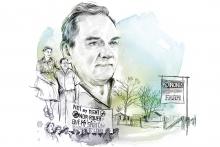
CLARENCE L. JORDAN died on Oct. 29, 1969, at 57 years old. The radical Southerner who dedicated his life to farming, sharing the gospel, and imploring his neighbors to actually follow Jesus is not widely remembered. Jordan died as simply as he lived — buried in a wooden box used to ship coffins, in an unmarked grave, and wearing his overalls. In early 2020, a little more than 50 years after Jordan (pronounced “Jurden”) died, I came across his work and was enamored. I began reading anything from or about him I could find. Jordan’s Georgia roots and love for the South mirrored my own. His charm and cutting humor were irresistible. Most appealing was Jordan’s stubborn commitment to radically following Christ, which led him to reject and rebuke the practices of racism, capitalism, and militarism in the U.S.
On the podcast Pass the Mic, writer Danté Stewart put a name to what I found in Jordan. “The reason why white [siblings] are struggling in this moment is because most of their models have been violent white supremacists,” Stewart said. “White [siblings], they don’t have models of liberation and love, so therefore they’re struggling in this moment.” Clarence Jordan was a “model of love and liberation” that we can learn from now. The dehumanizing forces of racial capitalism and militarism are no weaker in the U.S. today than in his lifetime, and many white Christians are avid proponents of both. Jordan’s resistance and radical theology did not die with him; instead, they can evolve and grow with the times. We should engage Jordan without idolizing him and advance his core commitments with a critical eye, honestly appropriating them for our modern struggles.
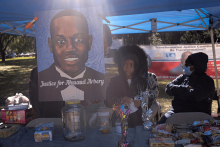
A judge sentenced Travis McMichael to life in prison on Aug. 8 for committing federal hate crimes in the 2020 killing of Ahmaud Arbery, a Black man shot while jogging through a mostly white Georgia neighborhood in a case that probed issues of racist violence and vigilantism in the United States.